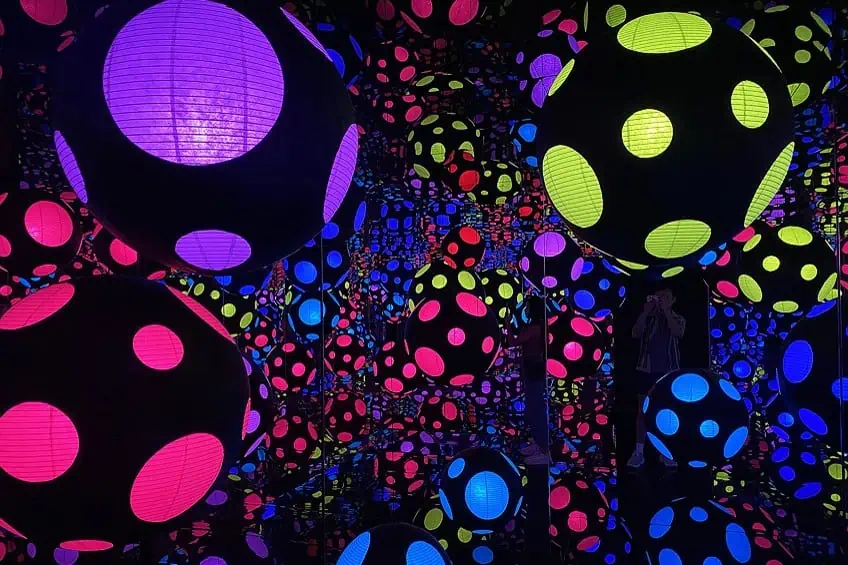Natural Form Artists – A Closer Look at 15 of the Top Artists
What is a natural form in art, and who are the most famous natural forms artists? If organic features in art ever pique your interest, then exploring the genre of natural forms of art will surely appeal to you. Nature provides many raw materials from which we can create unique art pieces that address our artistic inquiries while refraining from damaging the environment by using hazardous materials. In this article, we will dive into the 15 most famous natural form artists to date, including a few contemporary names that will give you a fresh perspective on how current artists are integrating natural forms into art.
Contents
- 1 Defining Natural Forms in Art
- 2 15 Natural Forms Artists Driven by Mother Nature
- 2.1 Vincent van Gogh (1853 – 1890)
- 2.2 Georgia O’Keeffe (1887 – 1986)
- 2.3 Ansel Adams (1902 – 1984)
- 2.4 Frida Kahlo (1907 – 1954)
- 2.5 Yayoi Kusama (1929 – Present)
- 2.6 Richard Long (1945 – Present)
- 2.7 Thierry Despont (1948 – 2023)
- 2.8 Andy Goldsworthy (1956 – Present)
- 2.9 Doris Salcedo (1958 – Present)
- 2.10 Kate Malone (1959 – Present)
- 2.11 Damien Hirst (1965 – Present)
- 2.12 Olafur Eliasson (1967 – Present)
- 2.13 Mika Ninagawa (1972 – Present)
- 2.14 Gordon Cheung (1975 – Present)
- 2.15 Kushagra Gupta (Present)
- 3 Frequently Asked Questions
Defining Natural Forms in Art
What is a natural form in art, and how do artists incorporate natural forms in art? The concept of natural forms refers to a material or object from nature that has not been altered or changed. Natural forms include materials like leaves, bones, flowers, and other related materials from the natural environment that are non-human and non-manufactured.
Simply understood, natural forms as a genre in art describe art that is created using the abovementioned materials.
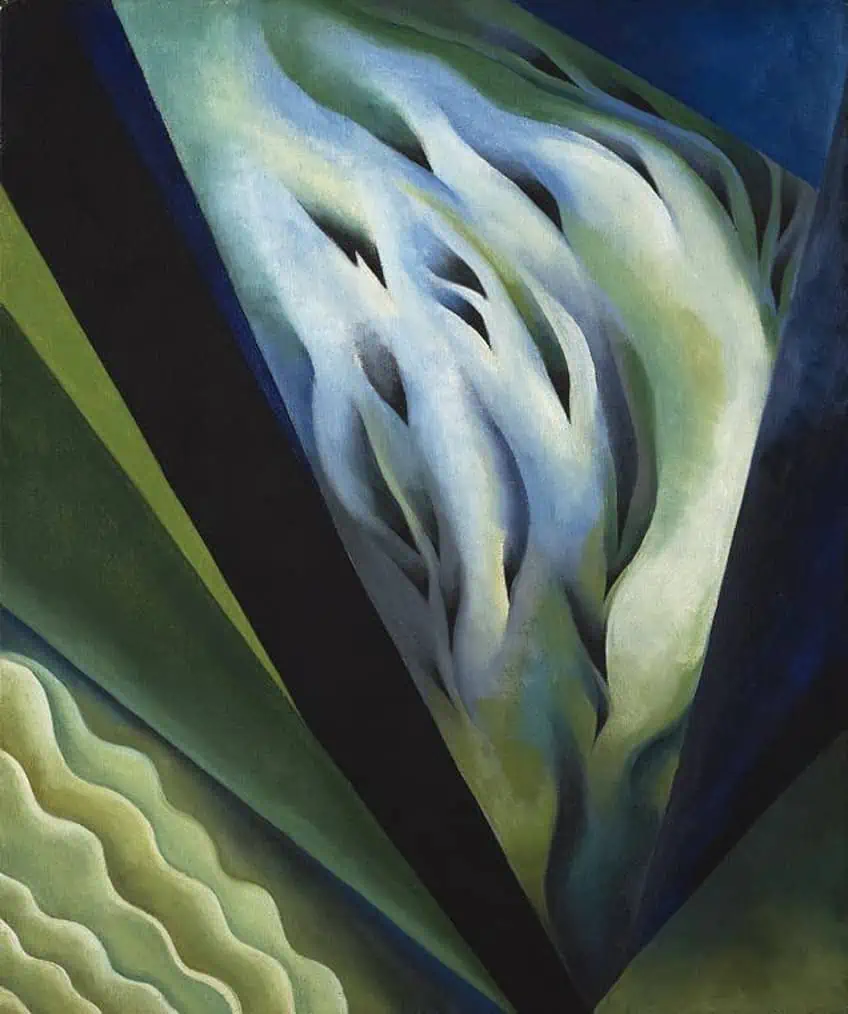
One will easily draw connections to art that was created by prehistoric civilizations, through cave paintings with pigments derived from crushed ochre and mixtures of animal fat and blood. Natural forms in art, also identified as natural art, can also include artists inspired by nature, such that their art may not include natural materials from the environment, but instead depict or unpack elements of nature or natural forms.
Important Concepts Addressed in Natural Art
At the forefront of natural forms of art lies a focus on the materiality of the natural objects used and their source as the subject of the artwork. Many natural forms artists address environmental issues and make artistic statements about nature. These artists produce art from nature and reinterpret the materials to make a statement or prove a point. Natural form art usually manifests as a new art object or documentation of the real source, which was left to decompose or disintegrate.
Natural form art uses natural elements to help the public engage with questions about traditional art materials and what it means to introduce unconventional materials into art.
On the other hand, natural form art can be considered controversial when art relies on the use of living creatures, which raises concerns about the ethical issues related to the treatment of deceased animals. Other important debates revolve around the idea that taxidermy can be regarded as fine art, especially when it transcends educational use. Regardless, the main point from which one needs to examine natural form artworks is the artist’s intention, which can range from symbolic, activistic, and conceptual to simply an artistic appreciation.
15 Natural Forms Artists Driven by Mother Nature
Natural form art can be incorporated into a variety of mediums, as demonstrated by these 15 talented natural forms artists below. We invite you to contemplate the importance of natural forms of art and the innovative, and seemingly unusual, ways that contemporary artists have reimagined natural form art.
Vincent van Gogh (1853 – 1890)
| Artist Name | Vincent Willem van Gogh |
| Date of Birth | 30 March 1853 |
| Date of Death | 29 July 1890 |
| Nationality | Dutch |
| Associated Movements, Themes, and Styles | Natural form art, Neo-Impressionism, Post-Impressionism, Modern art, and Pointillism |
| Mediums | Painting |
| Famous Artworks |
|
Globally celebrated post-Impressionist painter Vincent van Gogh created many stunning landscapes and floral still-life paintings inspired by the natural forms he encountered on his travels and daily life. Van Gogh was best known for his use of swirling and Pointillist brush strokes coupled with pastel and vibrant colors that made his paintings seem as though they were bursting with vitality and movement.
Van Gogh’s focus on natural forms as a post-Impressionist introduced a unique style to the 20th-century art world, although the artist did not receive as much recognition in his own day as one might have expected.
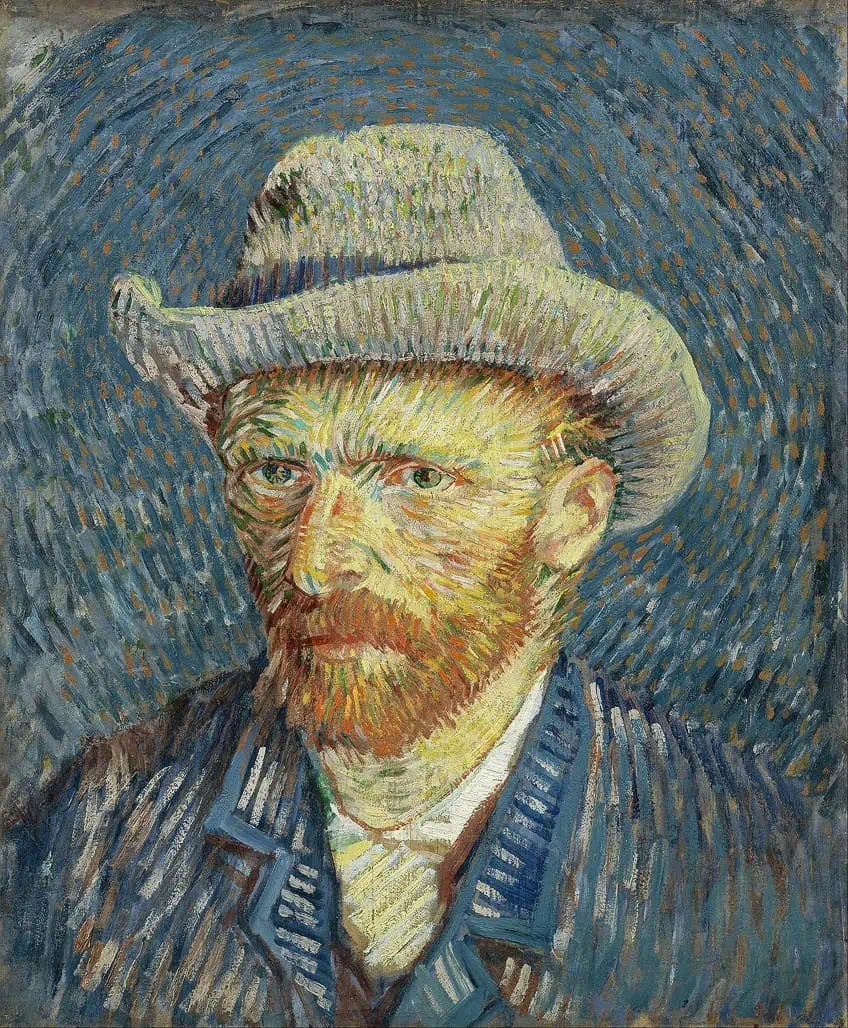
From golden sunflowers to serene almond blossoms, Van Gogh’s studies of natural forms showed his acute awareness of the beauty of the natural landscape and the buzzing yet subtle forms of life and energy within organic subjects, even if it were still-life.
Georgia O’Keeffe (1887 – 1986)
| Artist Name | Georgia Totto O’Keeffe |
| Date of Birth | 15 November 1887 |
| Date of Death | 6 March 1986 |
| Nationality | American |
| Associated Movements, Themes, and Styles | Natural form art, Contemporary art, nature, floral painting, Feminism, American Modernism, and Precisionism |
| Mediums | Painting |
| Famous Artworks |
|
Pioneering natural form painter Georgia O’Keeffe was one of the most famous American Modernism and Precisionism artists of the 20th century, who was largely inspired by the natural landscape and forms found in plant life. O’Keeffe’s paintings are widely celebrated as modern and radical representations of flowers, which sparked controversy during her time for their sexual ambiguity.
Her subjects and visuals include close-up representations of flowers, which appear almost abstract and range from vivid color hues to muted down palettes. Of O’Keeffe’s most notable natural form works was her black iris series, which became the artist’s feminist motif.
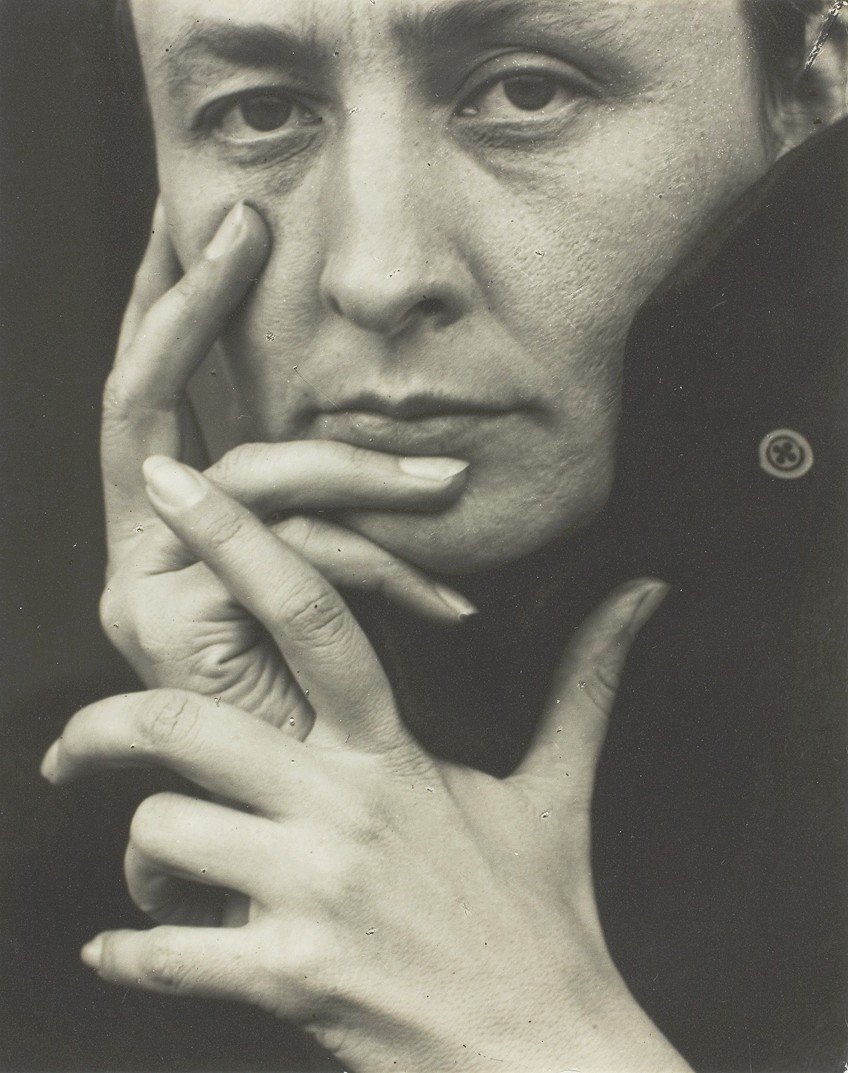
The iris was also popular in Greek mythology and Western teachings as it concerned the goddess Iris and a connection between earth and the heavens. Meanwhile, in Christianity, the iris was viewed as a symbol of Christ’s passion, Mary’s pain, and the resurrection. O’Keeffe’s work is an example of how natural-form artists elevate the use of natural elements in their art by incorporating symbolism as a visual language to address movements and shed light on how nature can be used to advocate for important societal needs.
Ansel Adams (1902 – 1984)
| Artist Name | Ansel Easton Adams |
| Date of Birth | 20 February 1902 |
| Date of Death | 22 April 1984 |
| Nationality | American |
| Associated Movements, Themes, and Styles | Natural forms art, Modern art, modern photography, 35mm photography, black and white photography, nature photography, landscapes, pure photography, and environmental art |
| Mediums | Photography |
| Famous Artworks |
|
Environmental photographer Ansel Adams was a prolific nature and landscape artist whose photographs show his appreciation for the natural forms of American national parks and the beauty of seasonal change. Adams’ photographs offer a contemplative stillness and solitude that magnified the grandiosity of the landscapes and natural forms he photographed.

His works have widely been celebrated by many film photographers since Adams’ photographs not only draw attention to his mastery over black and white photography but also his use of the medium as a way to advocate for environmental awareness.
In appreciating natural forms through art, artists like Adams instill in future generations the necessity to document the natural world and pay attention to how human activity can impact the longevity of such landscapes.
Frida Kahlo (1907 – 1954)
| Artist Name | Magdalena Carmen Frida Kahlo y Calderón |
| Date of Birth | 6 July 1907 |
| Date of Death | 13 July 1954 |
| Nationality | Mexican |
| Associated Movements, Themes, and Styles | Natural form art, Contemporary art, Mexican culture, artifacts, nature, and self-portraiture |
| Mediums | Painting |
| Famous Artworks |
|
Frida Kahlo was one of the best modern artists inspired by nature in the 20th century, who was not only driven by her passion for Mexican culture and autobiographical approach to painting but was also inspired by her culture and its use of natural symbols.
Kahlo’s intimate self-portraits reflect her deeply personal relationship with nature, as a mirror for her life that was embedded with rich symbolism.

From iconic works like Self-Portrait with Thorn Necklace and Hummingbird to The Wounded Deer, Kahlo not only personifies animals and inserts herself among the natural world, but she also uses nature to convey her suffering and heartache. The vibrancy that she worked with was also indicative of her Mexican roots, which were intertwined with spiritual concepts inspired by Mesoamerican cultures.
Yayoi Kusama (1929 – Present)
| Artist Name | Yayoi Kusama |
| Date of Birth | 22 March 1929 |
| Nationality | Japanese |
| Associated Movements, Themes, and Styles | Natural form art, Contemporary art, abstract art, fiction, environmental art, Minimalism, Feminism, and Pop art |
| Mediums | Installation, performance, sculpture, painting, drawing, writing, video art, and film |
| Famous Artworks |
|
Primarily recognized for her polka dots and infinity mirror rooms, Yayoi Kusama is also a natural forms artist, whose early works echoed her observations of natural elements, from pumpkins to flowers. Kusama’s multi-medium approach has made her one of the most versatile contemporary artists, who is also dubbed the “princess of polka dots”. In her pumpkin-inspired works, Kusama reflects on her love of pumpkins through a lighthearted and humorous lens, which she admires for their human-like forms and quality.
Her process is also led by her child-like approach to creating art, from simple natural forms to complex engagements with mental health, trauma, and sexual anxiety.
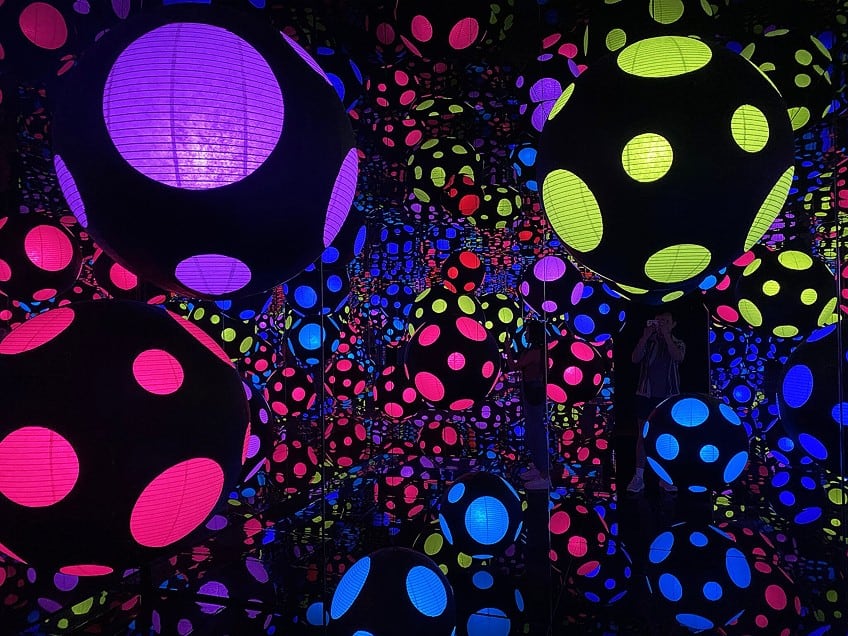
Richard Long (1945 – Present)
| Artist Name | Sir Richard Julian Long |
| Date of Birth | 2 June 1945 |
| Nationality | British |
| Associated Movements, Themes, and Styles | Natural form art, Contemporary art, land art, and conceptual art |
| Mediums | Installation, photography, and sculpture |
| Famous Artworks |
|
Famous land artist Richard Long is among the most recognized natural form artists in the United Kingdom. Long’s reputation as a master sculptor and environmental artist precedes him since he was recognized as the only artist to be shortlisted up to four times for the Turner Prize, which he eventually won in 1989.
Long studied at Saint Martin’s School of Art and used his conceptual approach to produce natural forms sculptures and site-specific works, which he also photographed.
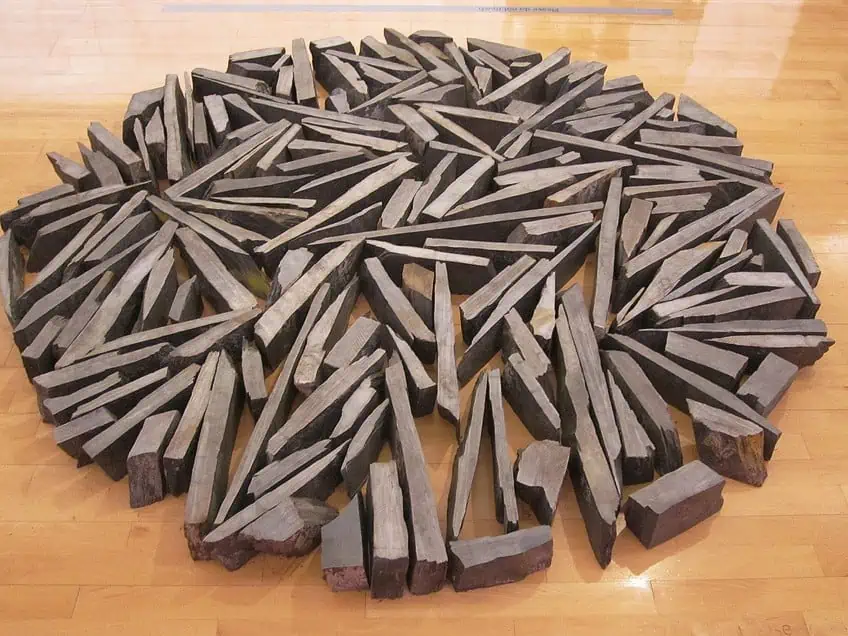
The artist works with many natural materials provided by the environment, from mud and rocks to pebbles and earth. Today, his works can be found in many permanent collections in art museums like Tate and other galleries across Australia, the United States, and Switzerland.
Thierry Despont (1948 – 2023)
| Artist Name | Thierry Guy Despont |
| Date of Birth | 19 April 1948 |
| Date of Death | 13 August 2023 |
| Nationality | French |
| Associated Movements, Themes, and Styles | Natural form art and Contemporary art |
| Mediums | Painting, design, and architecture |
| Famous Artworks |
|
Renowned architect and painter Thierry Despont was a famous French contemporary natural form artist, who was best known for his contributions to architecture, most notably in the restorations of the Statue of Liberty. Despont graduated from the École Nationale Supérieure des Beaux-Arts in Paris and founded the Office of Thierry W. Despont in 1980.
Despont’s dedication was noted in his mission to design homes that were for living and not “machines for living”, which was demonstrated in his architectural fluency and a long list of wealthy clientele.
Despont’s career expanded into art through his partnership with the Marlborough Gallery, where he exhibited his abstract natural form artworks inspired by the natural world, astronomy, and found objects. Despont sadly passed away in 2023 at the age of 75.
Andy Goldsworthy (1956 – Present)
| Artist Name | Andy Goldsworthy |
| Date of Birth | 26 July 1956 |
| Nationality | British |
| Associated Movements, Themes, and Styles | Natural form art, Contemporary art, environmental art, site-specific art, land art, and urban art |
| Mediums | Sculpture, installation, and photography |
| Famous Artworks |
|
Renowned British natural form artist Andy Goldsworthy is widely celebrated for his approach to site-specific installations and natural forms sculptures, which are commonly understood as part of land art. Goldsworthy creates his natural-form artworks from natural materials like branches, rocks, leaves, and even ice. Coupled with photography, Goldsworthy brings to life the idea that there are a lot of elements in life that do not last.
Goldsworthy studied at Bradford College of Art, as well as Preston Polytechnic, and drew inspiration from other land artists like Robert Smithson from the 1960s and 1970s.
Goldsworthy soon joined the environmental art movement and was featured in a 2001 documentary by Thomas Riedelsheimer titled Rivers and Tides: Andy Goldsworthy Working with Time. This was followed by another documentary released in 2018, which elaborated on the artist’s process. Goldsworthy is currently based in Dumfriesshire in the United Kingdom with many of his works now housed in museums such as the National Gallery of Art in Washington D. C. and the Courtauld Institute of Art in London.
Doris Salcedo (1958 – Present)
| Artist Name | Doris Salcedo |
| Date of Birth | 1958 |
| Nationality | Colombian |
| Associated Movements, Themes, and Styles | Natural form art, Contemporary art, site-specific art, political art, trauma, violence, organic materials, memory, and grief |
| Mediums | Installation, performance, and sculpture |
| Famous Artworks |
|
Doris Salcedo’s political and poetic natural forms sculptures and installations make her one of the leading contemporary natural form artists to date. Salcedo’s practice spans themes such as grief, memory, collective trauma, and political violence informed by her experiences in Columbia.
Salcedo incorporates natural forms in her art using organic materials fused with inorganic materials like furniture to create unique and often large-scale sculptural installations.
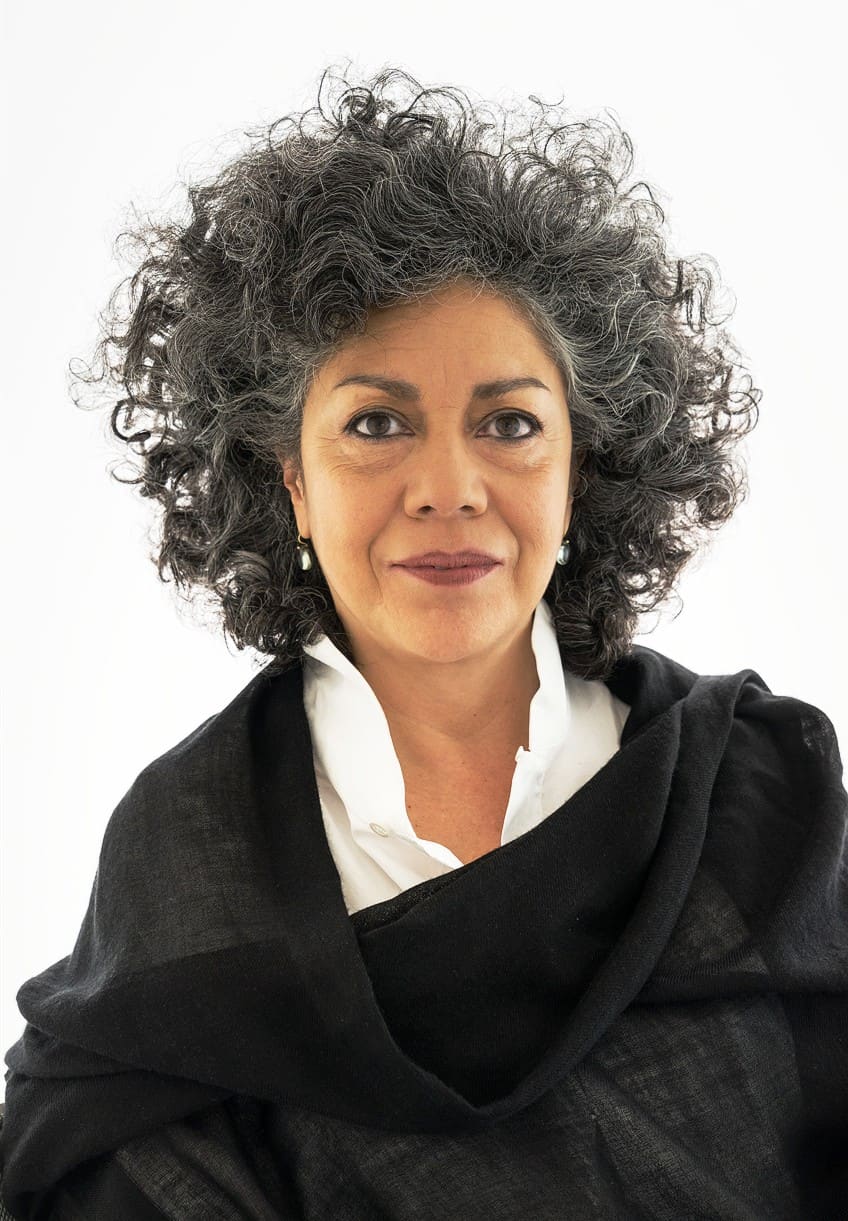
One of her most notable natural form artworks, Flor de Piel (2012), involved the use of rose petals stitched in a shroud to honor the victims of torture. The artist is currently based in Bogotá and has exhibited internationally at many well-known galleries and museums, from Brazil to Germany.
Kate Malone (1959 – Present)
| Artist Name | Kate Olivia Malone |
| Date of Birth | 29 January 1959 |
| Nationality | British |
| Associated Movements, Themes, and Styles | Natural form art, Contemporary art, ceramic art, and decorative art |
| Mediums | Sculpture and pottery |
| Famous Artworks |
|
Natural form artists can utilize almost any medium to highlight the beauty of nature and elements that inspire them to create works that are decorative, utilitarian, and artistic. Kate Malone is one such leading ceramic artist and natural form creative, whose 30-year career in sculpture has resulted in many unique and gorgeous vessels.
Malone is recognized as a leading contemporary ceramicist in the United Kingdom and works across glaze research, studio pottery, and public art fields.
Her distinct style, shaped by natural forms such as animals, birds, vegetables, and organic shapes, is developed in her studios in London and Thanet. Inspired by her observations of the textures of nature, fruit, and animals, Malone’s vessels also incorporate experimental glazing techniques, which led to many collaborations with industry professionals from the design and architecture fields.
Damien Hirst (1965 – Present)
| Artist Name | Damien Steven Hirst |
| Date of Birth | 7 June 1965 |
| Nationality | British |
| Associated Movements, Themes, and Styles | Natural form art, Contemporary art, death, rebirth, cycles, and taxidermy |
| Mediums | Sculpture, installation, painting, and printmaking |
| Famous Artworks |
|
Damien Hirst is one of the most famous natural form artists of the 21st century, whose works are both controversial for their use of deceased animals and fascinating for his complex integration of concepts like death, rebirth, and life cycles. Since the 1990s, Hirst’s artworks and sculptures have included dead animals, as seen in works like A Thousand Years (1990) and The Physical Impossibility of Death in the Mind of Someone Living (1991).
Hirst’s works are incredibly unconventional in the sense that his works rely on both the manipulated movement and survival of animals, as well as their natural responses and cycles. Works such as A Thousand Years relied on the lifecycle of maggots, which the artist introduced to a severed cow head. The maggots turned into flies and eventually died.
Hirst is one such natural form artist who uses the shock effect of his approaches and presentations to drive home complex topics that perhaps cannot achieve the same impact as a drawing.
The British artist was also the recipient of Tate Britain’s Turner Prize in 1995. He is also considered controversial in the genre of natural forms of art since some of his works involved living animals who died for his art. One such case was his 2012 show at Tate Modern titled In and Out of Love, which contained live butterflies in two windowless rooms. While the butterflies were taken care of by an expert, they eventually died and had to be swept out.
Olafur Eliasson (1967 – Present)
| Artist Name | Olafur Eliasson |
| Date of Birth | 5 February 1967 |
| Nationality | Icelandic–Danish |
| Associated Movements, Themes, and Styles | Natural forms art, Contemporary art, natural elements, site-specific art, and spatial research |
| Mediums | Installation and sculpture |
| Famous Artworks |
|
Olafur Eliasson is a famous Icelandic–Danish artist whose site-specific installations demonstrate his innovative approach to exploring the elements of nature to shift the way we view matters of the “ordinary”. Eliasson’s interest in nature’s materials as part of art practice emerged in his childhood experiences while living in Iceland and Denmark. Eliasson’s practice caught the attention of global critics in the 1990s when his first sculptures fused simple mechanics with illusory tools. The artist has since collaborated with various professionals in architecture and engineering to elevate his projects.
Among his most famous engagements with natural forms and elements include his 1996 work titled Your Strange Certainty Still Kept, where Eliasson froze water droplets mid-air using a perforated hose and strobe lights.
In 2003, he also created an artificial sun using a 50-foot orb composed of 200 yellow lamps titled The Weather Project, which entertained over two million visitors at Tate Modern. Since then, his work addressed other environmental issues such as climate change and global warming through various installations using imported icebergs installed in different cities throughout the 2010s.
Mika Ninagawa (1972 – Present)
| Artist Name | Mika Ninagawa |
| Date of Birth | 18 October 1972 |
| Nationality | Japanese |
| Associated Movements, Themes, and Styles | Natural form art, Contemporary art, landscape art, goldfish, and floral art |
| Mediums | Photography and film |
| Famous Artworks |
|
Multidisciplinary photographer Mika Ninagawa is among the best contemporary natural form photographers. Based in Tokyo, Ninagawa’s practice encompasses the genres of landscape and still-life expressed through photography and film. Ninagawa draws inspiration from the flora and fauna of the natural world to present vibrant snapshots of nature’s most beautiful subjects.
Her style is further expressed in her approach, which is marked by her distinct dream-like and bold aesthetic, which makes her one of the most celebrated photographers in Japan.
Ninagawa has also captured the portraits of many celebrities, from Beyoncé to Chiaki Kuriyama, which elevates her profile even further. In 2001, she was also awarded the Kimura Ihei Photography Award and a touring retrospective that was launched by the Tokyo Opera City Art Gallery in 2008.
Gordon Cheung (1975 – Present)
| Artist Name | Gordon Cheung |
| Date of Birth | 1975 |
| Nationality | British-Chinese |
| Associated Movements, Themes, and Styles | Natural form art, Contemporary art, mythology, culture, politics, and religion |
| Mediums | Painting |
| Famous Artworks |
|
Natural form artist Gordon Cheung is among the leading contemporary artists whose exploration of natural form is rooted in psychedelic landscapes, digital database images, and sand in painting. Cheung’s artworks are also created on prints of the Financial Times’ stock market listings layered with various interesting textures. His multimedia approach to exploring natural form also questions humanity and the role of humans while living in societies where most histories are penned by victors.
Other themes tackled in Cheung’s colorful and visually layered paintings include geopolitics, global capitalism, territory, and dream-like environments.
Cheung studied at the Central Saint Martin’s College of Art and Design and the Royal College of Art in London, followed by multiple solo shows across New York and London. Cheung’s works are currently housed in art collections such as the Museum of Modern Art and the British Museum among many other prestigious institutions.
Kushagra Gupta (Present)
| Artist Name | Kushagra Gupta |
| Date of Birth | Present |
| Nationality | Indian |
| Associated Movements, Themes, and Styles | Natural form art, Contemporary art, 3D art, commercial art, conceptual art, abstract art, visual communication, and digital art |
| Mediums | Graphic design and 3D software |
| Famous Artworks |
|
Digital artist Kushagra Gupta is one of the most talented emerging 3D artists, whose organic and surrealist prints and NFT artworks convey his early fascination with natural forms, organic and flowing states, and synthetic elements.
Gupta describes his work as digital sculptures, which explore the unique visual textures found in biology, natural, and man-made objects, and lifeforms that are merged to produce striking and free-flowing digital compositions.
Gupta’s work addresses themes of abundance, limitlessness, and the idea of construction, deconstruction, and reconstruction as a cycle in his work. The artist’s process is led by trial and error, as well as spontaneity to inform the organic visuals of his work.
These world-famous and leading modern and contemporary artists have introduced new ways of viewing and understanding how natural forms can manifest in different practices and decades. In reviewing the different artists and their approaches to incorporating natural forms across multiple mediums and concepts, one can truly witness the flexibility of natural form and its significance as a source of inspiration and artistic tool.
Frequently Asked Questions
What Is Natural Form in Art?
The idea of natural form in art refers to art that is inspired by aspects of nature that mimic the naturally occurring forms, materials, shapes, textures, and visual aesthetics found in the environment. Natural form artworks can be created using any medium and often incorporate elements and materials that are natural. This is also known as natural art. In contemporary cases, natural form artists also create works inspired by natural landscapes and other elements concerning the earth to cover concepts such as environmental issues, intangible concepts, symbols, patterns, and beauty, among other related art concepts affiliated with nature.
Which Famous Contemporary Artists Use Natural Form in Their Work?
Many famous contemporary artists use natural forms in their work. These include Richard Long, Andy Goldsworthy, Mika Ninagawa, Olafur Eliasson, and Damien Hirst, who are among the most famous.
Which Artist Painted Close-Up Natural Forms?
Georgia O’Keeffe was known to paint close-up compositions of natural forms that drew inspiration from various flowers. O’Keeffe was also recognized for her paintings of leaves, landscapes, and skulls, which encompassed her exploration of natural forms.
Jordan Anthony is a Cape Town-based film photographer, curator, and arts writer. She holds a Bachelor of Art in Fine Arts from the University of the Witwatersrand, Johannesburg, where she explored themes like healing, identity, dreams, and intuitive creation in her Contemporary art practice. Jordan has collaborated with various local art institutions, including the KZNSA Gallery in Durban, the Turbine Art Fair, and the Wits Art Museum. Her photography focuses on abstract color manipulations, portraiture, candid shots, and urban landscapes. She’s intrigued by philosophy, memory, and esotericism, drawing inspiration from Surrealism, Fluxus, and ancient civilizations, as well as childhood influences and found objects. Jordan is working for artfilemagazine since 2022 and writes blog posts about art history and photography.
Learn more about Jordan Anthony and about us.
Cite this Article
Jordan, Anthony, “Natural Form Artists – A Closer Look at 15 of the Top Artists.” artfilemagazine – Your Online Art Source. December 13, 2023. URL: https://artfilemagazine.com/natural-form-artists/
Anthony, J. (2023, 13 December). Natural Form Artists – A Closer Look at 15 of the Top Artists. artfilemagazine – Your Online Art Source. https://artfilemagazine.com/natural-form-artists/
Anthony, Jordan. “Natural Form Artists – A Closer Look at 15 of the Top Artists.” artfilemagazine – Your Online Art Source, December 13, 2023. https://artfilemagazine.com/natural-form-artists/.


